VERA CHAVES BARCELLOS' COMBINATIONS AT ZIELINSKY
Zielinsky presented Vera Chaves Barcellos' second solo exhibition at the gallery, entitled Objects 1969-1970.
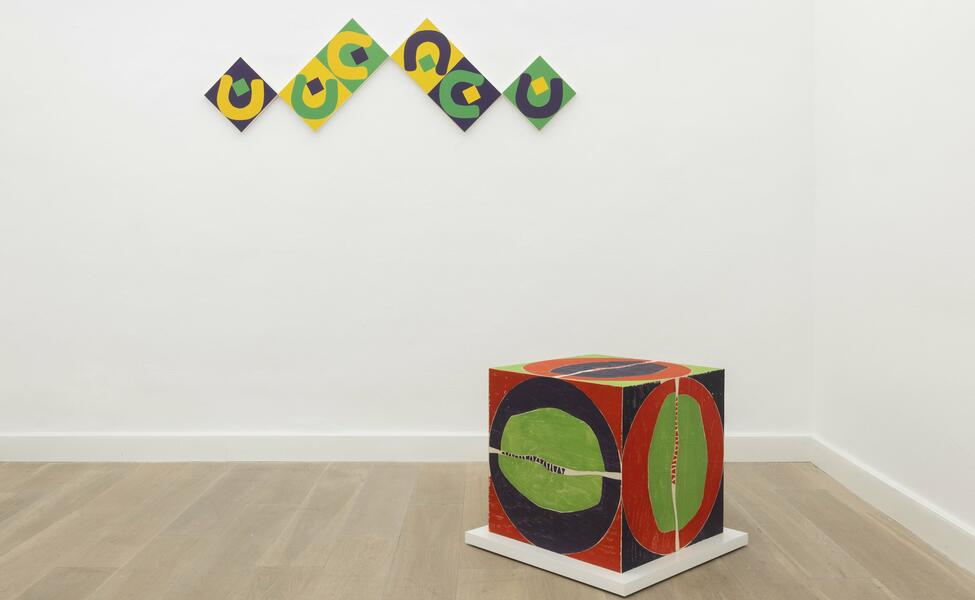
The exhibition focuses on pieces produced by the artist specifically between the years of 1969 and 1970. A series of objects developed as “open works”, as the artist usually calls when referring to these changing sets of engravings that require the viewer’s activation to come up with one of its possible combinations. There is no final and correct arrangement of the pieces, but there are different ways of displaying and ordering the set.
On May 28 and June 13, the pieces in the exhibition are activated and new sets formed by moving the objects in other directions. The gesture of setting a date for the ensemble to unfold in other combinations and rhythms plays with the historical sense of the works conceived and produced by Chaves Barcellos so that they can be manipulated by the viewer, but also a way of setting a time/space of protection of a work carried out and separated from our present for more than fifty years.
The fact of moving turns them into a non-paralyzed object, a gesture sought by many artists since the late 1950s. If we return to the Latin American context and the interests of neoconcretism, we find a type of key figures for the development of the viewer’s active experience with geometric forms: Lygia Pape and her “Livro da Criação” (1959) or her “Balé Neoconcreto” (1958); Hélio Oiticica and his “Relevos Espaciais” (1959-1960) or “Núcleos” (1960-1966); Lygia Clark and her “Bichos” series (1960-1964). The geometric contaminated with the relational of these previous years has been one of the starting points for the next generation in which Chaves Barcellos is a part along with other artists, who would combine geometric forms with the different conceptualist currents of the period.
The shapes present in Vera’s objects are curvilinear, they are constantly mixing with their neighboring shapes, fitting and moving through the space of the paper and the wall. It is an organic and sensual geometry, not of opposition, but of circularity and action.
-
Vistas de la exposición. Cortesía Zielinsky.
-
Vistas de la exposición. Cortesía Zielinsky.
-
Vistas de la exposición. Cortesía Zielinsky.
-
Vistas de la exposición. Cortesía Zielinsky.
-
Vistas de la exposición. Cortesía Zielinsky.
-
Vistas de la exposición. Cortesía Zielinsky.
-
Vistas de la exposición. Cortesía Zielinsky.
-
Vistas de la exposición. Cortesía Zielinsky.
-
Vistas de la exposición. Cortesía Zielinsky.
Vera Chaves Barcellos (1938) currently lives and works between Porto Alegre, Brazil and Barcelona, Spain. Recently the artist has participated in exhibitions: “To Write Down All Their Names”, Museo Helga de Alvear, Cáceres, Spain (2023) and Palais Populaire, Berlin (2022); “Off Register: Publishing Experiments by Women Artists in Latin America, 1960-1990” (2023), Center for Book Arts, New York, USA; “Chão da Praça: obras de la colección Pinacoteca” (2023), Pinacoteca de São Paulo, Brazil; “O estranho desaparecimento de Vera Chaves Barcellos” (2023), Fundação Iberê, Porto Alegre, Brazil; Los enemigos de la poesía: resistencias en América Latina”, Museo Reina Sofía, Madrid, Spain (2021).“Radical Women: Latin American Art, 1960–1985”, Hammer Museum, EEUU, Brooklyn Museum, USA, and Pinacoteca de São Paulo, Brazil (2018).
Her works are part of numerous public and private collections: Museo Nacional Centro de Arte Reina Sofía, Madrid, Spain; Pinacoteca de São Paulo, Brazil; MACBA-Museu d’Art Contemporani de Barcelona, Spain; Fundación Helga de Alvear, Cáceres, Spain; Museu de Arte Moderna de São Paulo, Brazil, among others.
Objects 1969-1970. Solo exhibition by Vera Chaves Barcellos.
Until June 21, 2024.
Zielinsky. Passatge de Mercader, 10. 08008 Barcelona, Spain.
Related Topics
May interest you
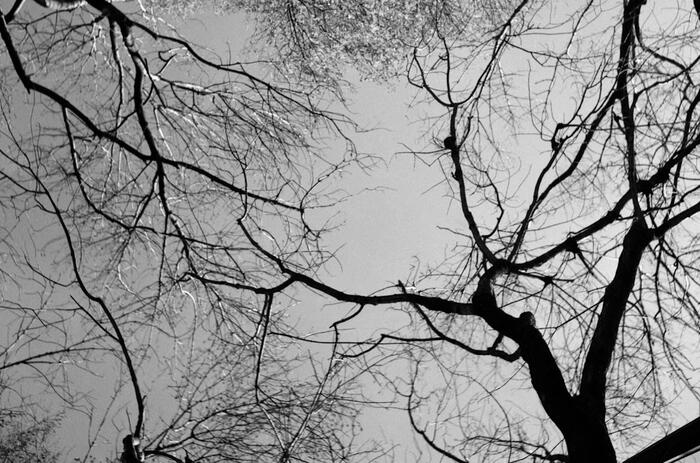
Madrid's Galería Freijo presents a photographic exhibition that materializes two singular views of Mexico in the mid-20th century: that of Armando Salas Portugal (Monterrey, Mexico, 1916 - Mexico City, Mexico, 1995) and his photographic work on the buildings of architect Félix Candela (Madrid, Spain, 1910 - Durham, USA, 1997), and that of architect Roberto Fernández Balbuena (Madrid, Spain, 1890 - Mexico City, Mexico, 1966), and his almost botanical devotion to documenting the ahuehuetes.
ARCHITECTURE AND LANDSCAPE OF MEXICO BY SALAS PORTUGAL AND FERNÁNDEZ BALBUENA IN FREIJO GALLERY

Madrid's Galería Freijo presents a photographic exhibition that materializes two singular views of Mexico in the mid-20th century: that of Armando Salas Portugal (Monterrey, Mexico, 1916 - Mexico City, Mexico, 1995) and his photographic work on the buildings of architect Félix Candela (Madrid, Spain, 1910 - Durham, USA, 1997), and that of architect Roberto Fernández Balbuena (Madrid, Spain, 1890 - Mexico City, Mexico, 1966), and his almost botanical devotion to documenting the ahuehuetes.
ARCHITECTURE AND LANDSCAPE OF MEXICO BY SALAS PORTUGAL AND FERNÁNDEZ BALBUENA IN FREIJO GALLERY
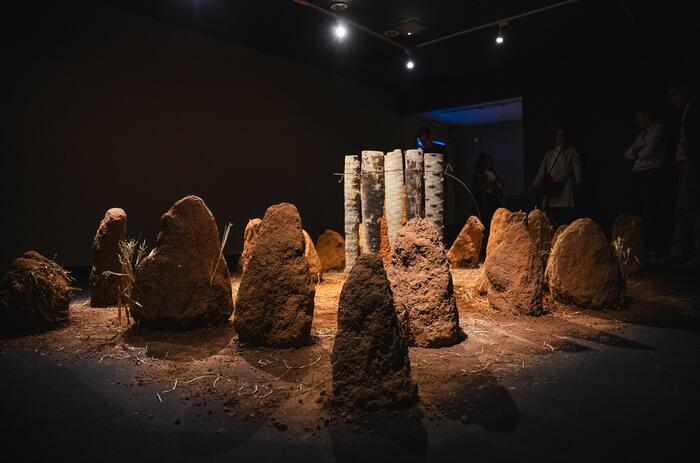
The International Association of Art Critics in Paraguay (AICA-Py) awarded the AICA 2023 Prize to the exhibition Cuadernos de campo (Field Notebooks) by Fidel Fernández, curated by Adriana Almada and exhibited during Pinta Sud 2023 at the Arte Actual gallery in Asuncion.
FIDEL FERNÁNDEZ WINS AICA PARAGUAY 2023 AWARD
The International Association of Art Critics in Paraguay (AICA-Py) awarded the AICA 2023 Prize to the exhibition Cuadernos de campo (Field Notebooks) by Fidel Fernández, curated by Adriana Almada and exhibited during Pinta Sud 2023 at the Arte Actual gallery in Asuncion.
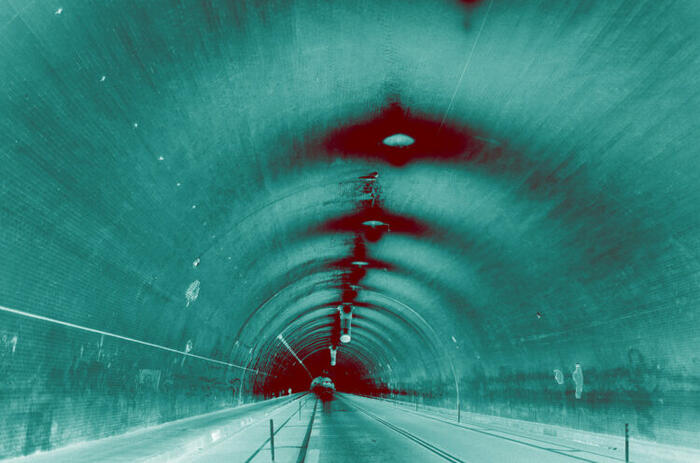
The Green Havana project is a captured sample of a time and an attitude, the same one that transits between evasion and hedonism and the social reality of the Cuban capital, a unique and referential site of that almost isolated Cuba and of a popular culture grown in the shadow of political influences.
LEANDRO FEAL AND HIS GREEN HAVANA
The Green Havana project is a captured sample of a time and an attitude, the same one that transits between evasion and hedonism and the social reality of the Cuban capital, a unique and referential site of that almost isolated Cuba and of a popular culture grown in the shadow of political influences.
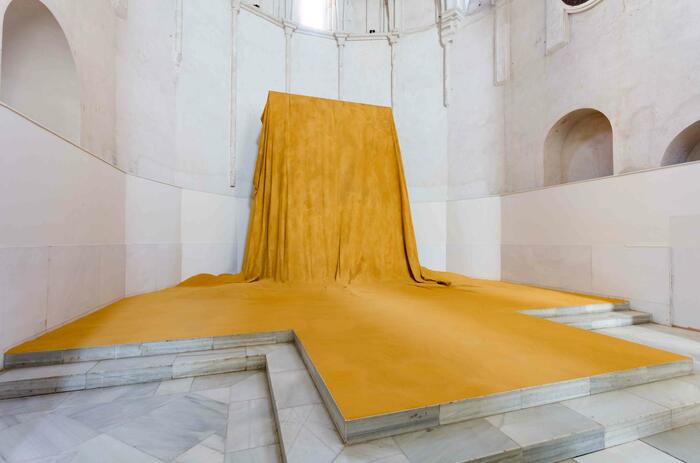
Delcy Morelos (Tierralta, Colombia, 1967) lands at the Centro Andaluz de Arte Contemporáneo (CAAC) in Seville with Profundis, an exhibition that gathers the spectacular intervention she has made ex profeso in the monumental areas of the Sevillian institution and that focuses on revitalizing the ancestral link of man with the earth, as well as capturing, through botany, the symbolism of the relations between Europe and America.
THE GERMINATION OF HISTORY ACCORDING TO DELCY MORELOS, IN SEVILLE
Delcy Morelos (Tierralta, Colombia, 1967) lands at the Centro Andaluz de Arte Contemporáneo (CAAC) in Seville with Profundis, an exhibition that gathers the spectacular intervention she has made ex profeso in the monumental areas of the Sevillian institution and that focuses on revitalizing the ancestral link of man with the earth, as well as capturing, through botany, the symbolism of the relations between Europe and America.
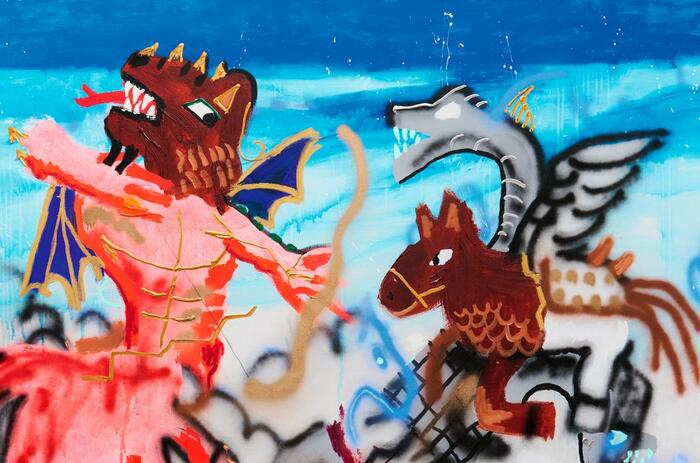
Standing before the expressive forcefulness of Mexican-American Robert Nava (East Chicago, USA, 1985) can be risky. At first glance, the primitivism in the technique used in his canvases is shocking in the conversion of the strength of the stroke and the basics of the gesture into a language that agglutinates a brute force. Perhaps for that reason, the usual tendency of those who face his work is to quickly pigeonhole it out of the academic, out of that refinement that is presupposed -although less and less- to those who fill the room of a museum, to let themselves be carried away by the urgency of expression in front of that pretended good taste.
THE URGENT BESTIARY OF ROBERT NAVA
Standing before the expressive forcefulness of Mexican-American Robert Nava (East Chicago, USA, 1985) can be risky. At first glance, the primitivism in the technique used in his canvases is shocking in the conversion of the strength of the stroke and the basics of the gesture into a language that agglutinates a brute force. Perhaps for that reason, the usual tendency of those who face his work is to quickly pigeonhole it out of the academic, out of that refinement that is presupposed -although less and less- to those who fill the room of a museum, to let themselves be carried away by the urgency of expression in front of that pretended good taste.
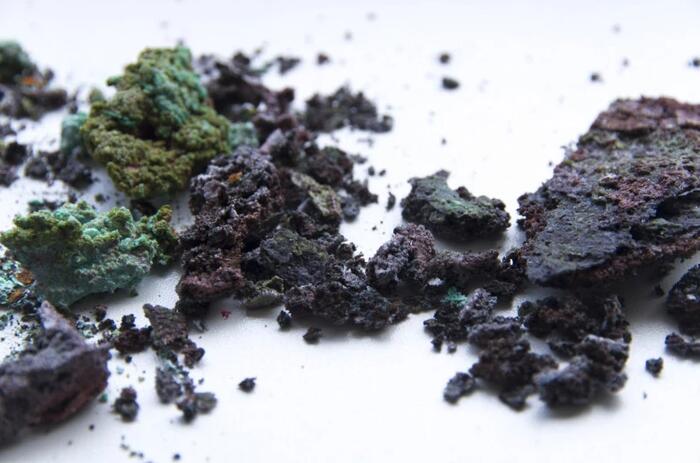
For some time now, the Inéditos program carried out by La Casa Encendida -an institution of the Montemadrid Foundation- has become a more or less reliable thermometer of the emerging curatorial scene that has Spain as its epicenter. As a result of that consolidation, within that faithful reflection, the Spanish social and artistic structure itself plays a very prominent role.
THE IBERO-AMERICAN CURATORSHIP AFTER INÉDITOS 2024
For some time now, the Inéditos program carried out by La Casa Encendida -an institution of the Montemadrid Foundation- has become a more or less reliable thermometer of the emerging curatorial scene that has Spain as its epicenter. As a result of that consolidation, within that faithful reflection, the Spanish social and artistic structure itself plays a very prominent role.
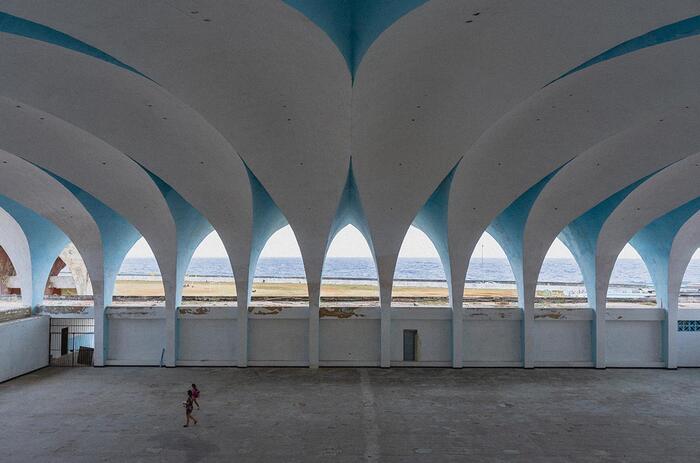
Included within the activities of the program Transcultura. Integrating Cuba, the Caribbean and the European Union through Culture and Creativity, an initiative coordinated by the European Union and implemented by UNESCO in Havana, fifteen young Caribbean photographers between the ages of 18 and 35 will participate in PHotoESPAÑA 2024 with the presentation of their recent work, in addition to being able to interact professionally with cultural agents and the sector.
YOUNG CARIBBEAN PHOTOGRAPHY AT PHOTOESPAÑA
Included within the activities of the program Transcultura. Integrating Cuba, the Caribbean and the European Union through Culture and Creativity, an initiative coordinated by the European Union and implemented by UNESCO in Havana, fifteen young Caribbean photographers between the ages of 18 and 35 will participate in PHotoESPAÑA 2024 with the presentation of their recent work, in addition to being able to interact professionally with cultural agents and the sector.
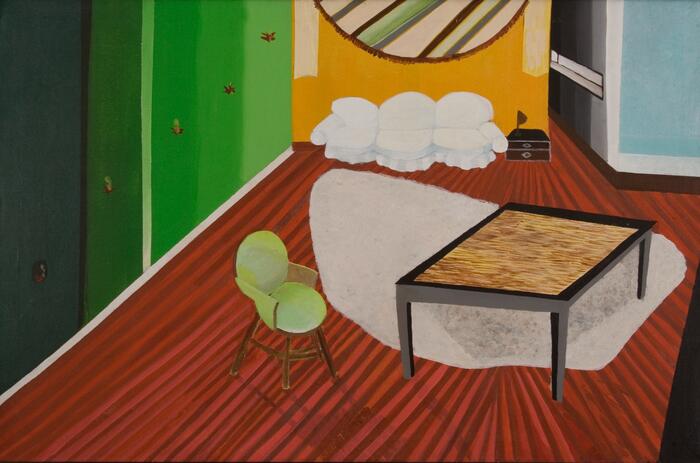
Art at Americas Society is presenting Interior with Landscapes, the first solo exhibition and mid-career survey of the Argentine artist Alejandra Seeber in New York. Many of Seeber's paintings explore the tension between representation and abstraction.
ALEJANDRA SEEBER: INTERIOR WITH LANDSCAPES
Art at Americas Society is presenting Interior with Landscapes, the first solo exhibition and mid-career survey of the Argentine artist Alejandra Seeber in New York. Many of Seeber's paintings explore the tension between representation and abstraction.
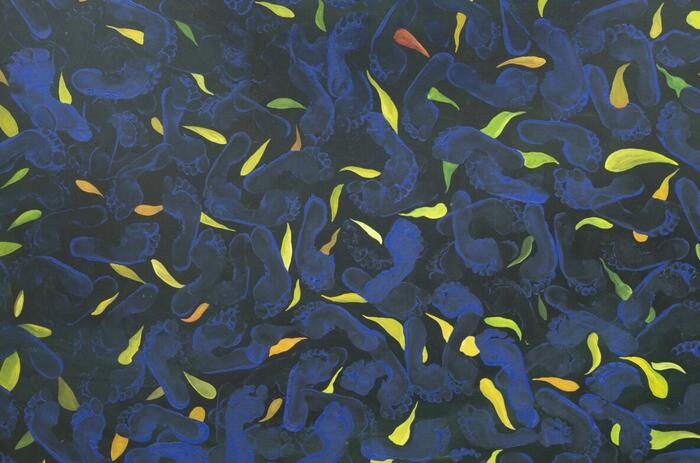
La Nueva Fábrica (LNF) announced Ru Raxal qa Rayb’äl (The Green of Our Desire), Edgar Calel’s first institutional solo exhibition in Guatemala. Edgar Calel anchors his work in the Mayan Kaqchikel worldviews that stem from family and community life in his hometown of Chi Xot (San Juan Comalapa).
THE GREEN OF OUR DESIRE: EDGAR CALEL IN LA NUEVA FÁBRICA
La Nueva Fábrica (LNF) announced Ru Raxal qa Rayb’äl (The Green of Our Desire), Edgar Calel’s first institutional solo exhibition in Guatemala. Edgar Calel anchors his work in the Mayan Kaqchikel worldviews that stem from family and community life in his hometown of Chi Xot (San Juan Comalapa).

Freedom First is the first solo exhibition that Fernando Bryce (Lima, Peru, 1965) presents at 1 Mira Madrid and is practically a declaration of intentions.
FERNANDO BRYCE: FREEDOM AND POST-TRUTH AT 1 MIRA MADRID
Freedom First is the first solo exhibition that Fernando Bryce (Lima, Peru, 1965) presents at 1 Mira Madrid and is practically a declaration of intentions.
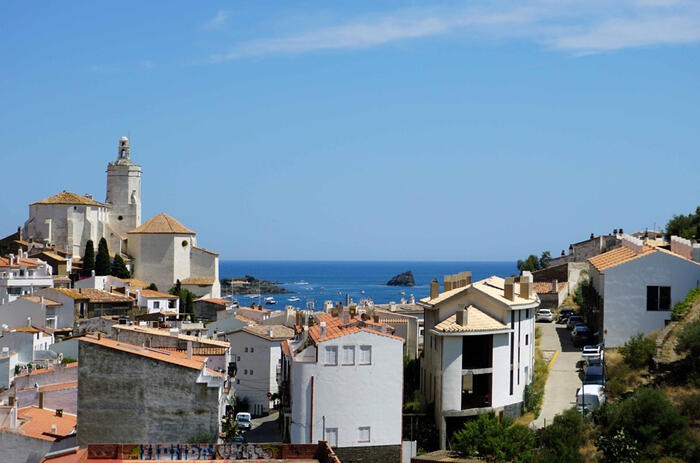
"If you hear a voice within you say, "you cannot paint," then by all means paint, and that voice will be silenced".Vincent Van Gogh
PATRICIA SICARDI, A BOOK, A LIFE
"If you hear a voice within you say, "you cannot paint," then by all means paint, and that voice will be silenced".Vincent Van Gogh

There is something structural in the Museo La Neomudéjar that allows plastic initiatives such as those of Heriberto Nieves (Vega Alta, Puerto Rico, 1957) to acquire greater meaning thanks to the dialogue with the space offered by this Madrid institution.
PROCESS AND CLIMATE IMPACT IN HERIBERTO NIEVES
There is something structural in the Museo La Neomudéjar that allows plastic initiatives such as those of Heriberto Nieves (Vega Alta, Puerto Rico, 1957) to acquire greater meaning thanks to the dialogue with the space offered by this Madrid institution.

Madrid's Galería Freijo presents a photographic exhibition that materializes two singular views of Mexico in the mid-20th century: that of Armando Salas Portugal (Monterrey, Mexico, 1916 - Mexico City, Mexico, 1995) and his photographic work on the buildings of architect Félix Candela (Madrid, Spain, 1910 - Durham, USA, 1997), and that of architect Roberto Fernández Balbuena (Madrid, Spain, 1890 - Mexico City, Mexico, 1966), and his almost botanical devotion to documenting the ahuehuetes.
ARCHITECTURE AND LANDSCAPE OF MEXICO BY SALAS PORTUGAL AND FERNÁNDEZ BALBUENA IN FREIJO GALLERY

The International Association of Art Critics in Paraguay (AICA-Py) awarded the AICA 2023 Prize to the exhibition Cuadernos de campo (Field Notebooks) by Fidel Fernández, curated by Adriana Almada and exhibited during Pinta Sud 2023 at the Arte Actual gallery in Asuncion.
FIDEL FERNÁNDEZ WINS AICA PARAGUAY 2023 AWARD
The International Association of Art Critics in Paraguay (AICA-Py) awarded the AICA 2023 Prize to the exhibition Cuadernos de campo (Field Notebooks) by Fidel Fernández, curated by Adriana Almada and exhibited during Pinta Sud 2023 at the Arte Actual gallery in Asuncion.

The Green Havana project is a captured sample of a time and an attitude, the same one that transits between evasion and hedonism and the social reality of the Cuban capital, a unique and referential site of that almost isolated Cuba and of a popular culture grown in the shadow of political influences.
LEANDRO FEAL AND HIS GREEN HAVANA
The Green Havana project is a captured sample of a time and an attitude, the same one that transits between evasion and hedonism and the social reality of the Cuban capital, a unique and referential site of that almost isolated Cuba and of a popular culture grown in the shadow of political influences.

Delcy Morelos (Tierralta, Colombia, 1967) lands at the Centro Andaluz de Arte Contemporáneo (CAAC) in Seville with Profundis, an exhibition that gathers the spectacular intervention she has made ex profeso in the monumental areas of the Sevillian institution and that focuses on revitalizing the ancestral link of man with the earth, as well as capturing, through botany, the symbolism of the relations between Europe and America.
THE GERMINATION OF HISTORY ACCORDING TO DELCY MORELOS, IN SEVILLE
Delcy Morelos (Tierralta, Colombia, 1967) lands at the Centro Andaluz de Arte Contemporáneo (CAAC) in Seville with Profundis, an exhibition that gathers the spectacular intervention she has made ex profeso in the monumental areas of the Sevillian institution and that focuses on revitalizing the ancestral link of man with the earth, as well as capturing, through botany, the symbolism of the relations between Europe and America.

Standing before the expressive forcefulness of Mexican-American Robert Nava (East Chicago, USA, 1985) can be risky. At first glance, the primitivism in the technique used in his canvases is shocking in the conversion of the strength of the stroke and the basics of the gesture into a language that agglutinates a brute force. Perhaps for that reason, the usual tendency of those who face his work is to quickly pigeonhole it out of the academic, out of that refinement that is presupposed -although less and less- to those who fill the room of a museum, to let themselves be carried away by the urgency of expression in front of that pretended good taste.
THE URGENT BESTIARY OF ROBERT NAVA
Standing before the expressive forcefulness of Mexican-American Robert Nava (East Chicago, USA, 1985) can be risky. At first glance, the primitivism in the technique used in his canvases is shocking in the conversion of the strength of the stroke and the basics of the gesture into a language that agglutinates a brute force. Perhaps for that reason, the usual tendency of those who face his work is to quickly pigeonhole it out of the academic, out of that refinement that is presupposed -although less and less- to those who fill the room of a museum, to let themselves be carried away by the urgency of expression in front of that pretended good taste.

For some time now, the Inéditos program carried out by La Casa Encendida -an institution of the Montemadrid Foundation- has become a more or less reliable thermometer of the emerging curatorial scene that has Spain as its epicenter. As a result of that consolidation, within that faithful reflection, the Spanish social and artistic structure itself plays a very prominent role.
THE IBERO-AMERICAN CURATORSHIP AFTER INÉDITOS 2024
For some time now, the Inéditos program carried out by La Casa Encendida -an institution of the Montemadrid Foundation- has become a more or less reliable thermometer of the emerging curatorial scene that has Spain as its epicenter. As a result of that consolidation, within that faithful reflection, the Spanish social and artistic structure itself plays a very prominent role.

Included within the activities of the program Transcultura. Integrating Cuba, the Caribbean and the European Union through Culture and Creativity, an initiative coordinated by the European Union and implemented by UNESCO in Havana, fifteen young Caribbean photographers between the ages of 18 and 35 will participate in PHotoESPAÑA 2024 with the presentation of their recent work, in addition to being able to interact professionally with cultural agents and the sector.
YOUNG CARIBBEAN PHOTOGRAPHY AT PHOTOESPAÑA
Included within the activities of the program Transcultura. Integrating Cuba, the Caribbean and the European Union through Culture and Creativity, an initiative coordinated by the European Union and implemented by UNESCO in Havana, fifteen young Caribbean photographers between the ages of 18 and 35 will participate in PHotoESPAÑA 2024 with the presentation of their recent work, in addition to being able to interact professionally with cultural agents and the sector.

Art at Americas Society is presenting Interior with Landscapes, the first solo exhibition and mid-career survey of the Argentine artist Alejandra Seeber in New York. Many of Seeber's paintings explore the tension between representation and abstraction.
ALEJANDRA SEEBER: INTERIOR WITH LANDSCAPES
Art at Americas Society is presenting Interior with Landscapes, the first solo exhibition and mid-career survey of the Argentine artist Alejandra Seeber in New York. Many of Seeber's paintings explore the tension between representation and abstraction.

La Nueva Fábrica (LNF) announced Ru Raxal qa Rayb’äl (The Green of Our Desire), Edgar Calel’s first institutional solo exhibition in Guatemala. Edgar Calel anchors his work in the Mayan Kaqchikel worldviews that stem from family and community life in his hometown of Chi Xot (San Juan Comalapa).
THE GREEN OF OUR DESIRE: EDGAR CALEL IN LA NUEVA FÁBRICA
La Nueva Fábrica (LNF) announced Ru Raxal qa Rayb’äl (The Green of Our Desire), Edgar Calel’s first institutional solo exhibition in Guatemala. Edgar Calel anchors his work in the Mayan Kaqchikel worldviews that stem from family and community life in his hometown of Chi Xot (San Juan Comalapa).

Freedom First is the first solo exhibition that Fernando Bryce (Lima, Peru, 1965) presents at 1 Mira Madrid and is practically a declaration of intentions.
FERNANDO BRYCE: FREEDOM AND POST-TRUTH AT 1 MIRA MADRID
Freedom First is the first solo exhibition that Fernando Bryce (Lima, Peru, 1965) presents at 1 Mira Madrid and is practically a declaration of intentions.

"If you hear a voice within you say, "you cannot paint," then by all means paint, and that voice will be silenced".Vincent Van Gogh
PATRICIA SICARDI, A BOOK, A LIFE
"If you hear a voice within you say, "you cannot paint," then by all means paint, and that voice will be silenced".Vincent Van Gogh

There is something structural in the Museo La Neomudéjar that allows plastic initiatives such as those of Heriberto Nieves (Vega Alta, Puerto Rico, 1957) to acquire greater meaning thanks to the dialogue with the space offered by this Madrid institution.
PROCESS AND CLIMATE IMPACT IN HERIBERTO NIEVES
There is something structural in the Museo La Neomudéjar that allows plastic initiatives such as those of Heriberto Nieves (Vega Alta, Puerto Rico, 1957) to acquire greater meaning thanks to the dialogue with the space offered by this Madrid institution.

Madrid's Galería Freijo presents a photographic exhibition that materializes two singular views of Mexico in the mid-20th century: that of Armando Salas Portugal (Monterrey, Mexico, 1916 - Mexico City, Mexico, 1995) and his photographic work on the buildings of architect Félix Candela (Madrid, Spain, 1910 - Durham, USA, 1997), and that of architect Roberto Fernández Balbuena (Madrid, Spain, 1890 - Mexico City, Mexico, 1966), and his almost botanical devotion to documenting the ahuehuetes.
ARCHITECTURE AND LANDSCAPE OF MEXICO BY SALAS PORTUGAL AND FERNÁNDEZ BALBUENA IN FREIJO GALLERY

The International Association of Art Critics in Paraguay (AICA-Py) awarded the AICA 2023 Prize to the exhibition Cuadernos de campo (Field Notebooks) by Fidel Fernández, curated by Adriana Almada and exhibited during Pinta Sud 2023 at the Arte Actual gallery in Asuncion.
FIDEL FERNÁNDEZ WINS AICA PARAGUAY 2023 AWARD
The International Association of Art Critics in Paraguay (AICA-Py) awarded the AICA 2023 Prize to the exhibition Cuadernos de campo (Field Notebooks) by Fidel Fernández, curated by Adriana Almada and exhibited during Pinta Sud 2023 at the Arte Actual gallery in Asuncion.

The Green Havana project is a captured sample of a time and an attitude, the same one that transits between evasion and hedonism and the social reality of the Cuban capital, a unique and referential site of that almost isolated Cuba and of a popular culture grown in the shadow of political influences.
LEANDRO FEAL AND HIS GREEN HAVANA
The Green Havana project is a captured sample of a time and an attitude, the same one that transits between evasion and hedonism and the social reality of the Cuban capital, a unique and referential site of that almost isolated Cuba and of a popular culture grown in the shadow of political influences.

Delcy Morelos (Tierralta, Colombia, 1967) lands at the Centro Andaluz de Arte Contemporáneo (CAAC) in Seville with Profundis, an exhibition that gathers the spectacular intervention she has made ex profeso in the monumental areas of the Sevillian institution and that focuses on revitalizing the ancestral link of man with the earth, as well as capturing, through botany, the symbolism of the relations between Europe and America.
THE GERMINATION OF HISTORY ACCORDING TO DELCY MORELOS, IN SEVILLE
Delcy Morelos (Tierralta, Colombia, 1967) lands at the Centro Andaluz de Arte Contemporáneo (CAAC) in Seville with Profundis, an exhibition that gathers the spectacular intervention she has made ex profeso in the monumental areas of the Sevillian institution and that focuses on revitalizing the ancestral link of man with the earth, as well as capturing, through botany, the symbolism of the relations between Europe and America.

Standing before the expressive forcefulness of Mexican-American Robert Nava (East Chicago, USA, 1985) can be risky. At first glance, the primitivism in the technique used in his canvases is shocking in the conversion of the strength of the stroke and the basics of the gesture into a language that agglutinates a brute force. Perhaps for that reason, the usual tendency of those who face his work is to quickly pigeonhole it out of the academic, out of that refinement that is presupposed -although less and less- to those who fill the room of a museum, to let themselves be carried away by the urgency of expression in front of that pretended good taste.
THE URGENT BESTIARY OF ROBERT NAVA
Standing before the expressive forcefulness of Mexican-American Robert Nava (East Chicago, USA, 1985) can be risky. At first glance, the primitivism in the technique used in his canvases is shocking in the conversion of the strength of the stroke and the basics of the gesture into a language that agglutinates a brute force. Perhaps for that reason, the usual tendency of those who face his work is to quickly pigeonhole it out of the academic, out of that refinement that is presupposed -although less and less- to those who fill the room of a museum, to let themselves be carried away by the urgency of expression in front of that pretended good taste.

For some time now, the Inéditos program carried out by La Casa Encendida -an institution of the Montemadrid Foundation- has become a more or less reliable thermometer of the emerging curatorial scene that has Spain as its epicenter. As a result of that consolidation, within that faithful reflection, the Spanish social and artistic structure itself plays a very prominent role.
THE IBERO-AMERICAN CURATORSHIP AFTER INÉDITOS 2024
For some time now, the Inéditos program carried out by La Casa Encendida -an institution of the Montemadrid Foundation- has become a more or less reliable thermometer of the emerging curatorial scene that has Spain as its epicenter. As a result of that consolidation, within that faithful reflection, the Spanish social and artistic structure itself plays a very prominent role.

Included within the activities of the program Transcultura. Integrating Cuba, the Caribbean and the European Union through Culture and Creativity, an initiative coordinated by the European Union and implemented by UNESCO in Havana, fifteen young Caribbean photographers between the ages of 18 and 35 will participate in PHotoESPAÑA 2024 with the presentation of their recent work, in addition to being able to interact professionally with cultural agents and the sector.
YOUNG CARIBBEAN PHOTOGRAPHY AT PHOTOESPAÑA
Included within the activities of the program Transcultura. Integrating Cuba, the Caribbean and the European Union through Culture and Creativity, an initiative coordinated by the European Union and implemented by UNESCO in Havana, fifteen young Caribbean photographers between the ages of 18 and 35 will participate in PHotoESPAÑA 2024 with the presentation of their recent work, in addition to being able to interact professionally with cultural agents and the sector.

Art at Americas Society is presenting Interior with Landscapes, the first solo exhibition and mid-career survey of the Argentine artist Alejandra Seeber in New York. Many of Seeber's paintings explore the tension between representation and abstraction.
ALEJANDRA SEEBER: INTERIOR WITH LANDSCAPES
Art at Americas Society is presenting Interior with Landscapes, the first solo exhibition and mid-career survey of the Argentine artist Alejandra Seeber in New York. Many of Seeber's paintings explore the tension between representation and abstraction.

La Nueva Fábrica (LNF) announced Ru Raxal qa Rayb’äl (The Green of Our Desire), Edgar Calel’s first institutional solo exhibition in Guatemala. Edgar Calel anchors his work in the Mayan Kaqchikel worldviews that stem from family and community life in his hometown of Chi Xot (San Juan Comalapa).
THE GREEN OF OUR DESIRE: EDGAR CALEL IN LA NUEVA FÁBRICA
La Nueva Fábrica (LNF) announced Ru Raxal qa Rayb’äl (The Green of Our Desire), Edgar Calel’s first institutional solo exhibition in Guatemala. Edgar Calel anchors his work in the Mayan Kaqchikel worldviews that stem from family and community life in his hometown of Chi Xot (San Juan Comalapa).

Freedom First is the first solo exhibition that Fernando Bryce (Lima, Peru, 1965) presents at 1 Mira Madrid and is practically a declaration of intentions.
FERNANDO BRYCE: FREEDOM AND POST-TRUTH AT 1 MIRA MADRID
Freedom First is the first solo exhibition that Fernando Bryce (Lima, Peru, 1965) presents at 1 Mira Madrid and is practically a declaration of intentions.

"If you hear a voice within you say, "you cannot paint," then by all means paint, and that voice will be silenced".Vincent Van Gogh
PATRICIA SICARDI, A BOOK, A LIFE
"If you hear a voice within you say, "you cannot paint," then by all means paint, and that voice will be silenced".Vincent Van Gogh

There is something structural in the Museo La Neomudéjar that allows plastic initiatives such as those of Heriberto Nieves (Vega Alta, Puerto Rico, 1957) to acquire greater meaning thanks to the dialogue with the space offered by this Madrid institution.
PROCESS AND CLIMATE IMPACT IN HERIBERTO NIEVES
There is something structural in the Museo La Neomudéjar that allows plastic initiatives such as those of Heriberto Nieves (Vega Alta, Puerto Rico, 1957) to acquire greater meaning thanks to the dialogue with the space offered by this Madrid institution.

Madrid's Galería Freijo presents a photographic exhibition that materializes two singular views of Mexico in the mid-20th century: that of Armando Salas Portugal (Monterrey, Mexico, 1916 - Mexico City, Mexico, 1995) and his photographic work on the buildings of architect Félix Candela (Madrid, Spain, 1910 - Durham, USA, 1997), and that of architect Roberto Fernández Balbuena (Madrid, Spain, 1890 - Mexico City, Mexico, 1966), and his almost botanical devotion to documenting the ahuehuetes.
ARCHITECTURE AND LANDSCAPE OF MEXICO BY SALAS PORTUGAL AND FERNÁNDEZ BALBUENA IN FREIJO GALLERY

The International Association of Art Critics in Paraguay (AICA-Py) awarded the AICA 2023 Prize to the exhibition Cuadernos de campo (Field Notebooks) by Fidel Fernández, curated by Adriana Almada and exhibited during Pinta Sud 2023 at the Arte Actual gallery in Asuncion.
FIDEL FERNÁNDEZ WINS AICA PARAGUAY 2023 AWARD
The International Association of Art Critics in Paraguay (AICA-Py) awarded the AICA 2023 Prize to the exhibition Cuadernos de campo (Field Notebooks) by Fidel Fernández, curated by Adriana Almada and exhibited during Pinta Sud 2023 at the Arte Actual gallery in Asuncion.

The Green Havana project is a captured sample of a time and an attitude, the same one that transits between evasion and hedonism and the social reality of the Cuban capital, a unique and referential site of that almost isolated Cuba and of a popular culture grown in the shadow of political influences.
LEANDRO FEAL AND HIS GREEN HAVANA
The Green Havana project is a captured sample of a time and an attitude, the same one that transits between evasion and hedonism and the social reality of the Cuban capital, a unique and referential site of that almost isolated Cuba and of a popular culture grown in the shadow of political influences.

Delcy Morelos (Tierralta, Colombia, 1967) lands at the Centro Andaluz de Arte Contemporáneo (CAAC) in Seville with Profundis, an exhibition that gathers the spectacular intervention she has made ex profeso in the monumental areas of the Sevillian institution and that focuses on revitalizing the ancestral link of man with the earth, as well as capturing, through botany, the symbolism of the relations between Europe and America.
THE GERMINATION OF HISTORY ACCORDING TO DELCY MORELOS, IN SEVILLE
Delcy Morelos (Tierralta, Colombia, 1967) lands at the Centro Andaluz de Arte Contemporáneo (CAAC) in Seville with Profundis, an exhibition that gathers the spectacular intervention she has made ex profeso in the monumental areas of the Sevillian institution and that focuses on revitalizing the ancestral link of man with the earth, as well as capturing, through botany, the symbolism of the relations between Europe and America.

Standing before the expressive forcefulness of Mexican-American Robert Nava (East Chicago, USA, 1985) can be risky. At first glance, the primitivism in the technique used in his canvases is shocking in the conversion of the strength of the stroke and the basics of the gesture into a language that agglutinates a brute force. Perhaps for that reason, the usual tendency of those who face his work is to quickly pigeonhole it out of the academic, out of that refinement that is presupposed -although less and less- to those who fill the room of a museum, to let themselves be carried away by the urgency of expression in front of that pretended good taste.
THE URGENT BESTIARY OF ROBERT NAVA
Standing before the expressive forcefulness of Mexican-American Robert Nava (East Chicago, USA, 1985) can be risky. At first glance, the primitivism in the technique used in his canvases is shocking in the conversion of the strength of the stroke and the basics of the gesture into a language that agglutinates a brute force. Perhaps for that reason, the usual tendency of those who face his work is to quickly pigeonhole it out of the academic, out of that refinement that is presupposed -although less and less- to those who fill the room of a museum, to let themselves be carried away by the urgency of expression in front of that pretended good taste.

For some time now, the Inéditos program carried out by La Casa Encendida -an institution of the Montemadrid Foundation- has become a more or less reliable thermometer of the emerging curatorial scene that has Spain as its epicenter. As a result of that consolidation, within that faithful reflection, the Spanish social and artistic structure itself plays a very prominent role.
THE IBERO-AMERICAN CURATORSHIP AFTER INÉDITOS 2024
For some time now, the Inéditos program carried out by La Casa Encendida -an institution of the Montemadrid Foundation- has become a more or less reliable thermometer of the emerging curatorial scene that has Spain as its epicenter. As a result of that consolidation, within that faithful reflection, the Spanish social and artistic structure itself plays a very prominent role.

Included within the activities of the program Transcultura. Integrating Cuba, the Caribbean and the European Union through Culture and Creativity, an initiative coordinated by the European Union and implemented by UNESCO in Havana, fifteen young Caribbean photographers between the ages of 18 and 35 will participate in PHotoESPAÑA 2024 with the presentation of their recent work, in addition to being able to interact professionally with cultural agents and the sector.
YOUNG CARIBBEAN PHOTOGRAPHY AT PHOTOESPAÑA
Included within the activities of the program Transcultura. Integrating Cuba, the Caribbean and the European Union through Culture and Creativity, an initiative coordinated by the European Union and implemented by UNESCO in Havana, fifteen young Caribbean photographers between the ages of 18 and 35 will participate in PHotoESPAÑA 2024 with the presentation of their recent work, in addition to being able to interact professionally with cultural agents and the sector.

Art at Americas Society is presenting Interior with Landscapes, the first solo exhibition and mid-career survey of the Argentine artist Alejandra Seeber in New York. Many of Seeber's paintings explore the tension between representation and abstraction.
ALEJANDRA SEEBER: INTERIOR WITH LANDSCAPES
Art at Americas Society is presenting Interior with Landscapes, the first solo exhibition and mid-career survey of the Argentine artist Alejandra Seeber in New York. Many of Seeber's paintings explore the tension between representation and abstraction.

La Nueva Fábrica (LNF) announced Ru Raxal qa Rayb’äl (The Green of Our Desire), Edgar Calel’s first institutional solo exhibition in Guatemala. Edgar Calel anchors his work in the Mayan Kaqchikel worldviews that stem from family and community life in his hometown of Chi Xot (San Juan Comalapa).
THE GREEN OF OUR DESIRE: EDGAR CALEL IN LA NUEVA FÁBRICA
La Nueva Fábrica (LNF) announced Ru Raxal qa Rayb’äl (The Green of Our Desire), Edgar Calel’s first institutional solo exhibition in Guatemala. Edgar Calel anchors his work in the Mayan Kaqchikel worldviews that stem from family and community life in his hometown of Chi Xot (San Juan Comalapa).

Freedom First is the first solo exhibition that Fernando Bryce (Lima, Peru, 1965) presents at 1 Mira Madrid and is practically a declaration of intentions.
FERNANDO BRYCE: FREEDOM AND POST-TRUTH AT 1 MIRA MADRID
Freedom First is the first solo exhibition that Fernando Bryce (Lima, Peru, 1965) presents at 1 Mira Madrid and is practically a declaration of intentions.

"If you hear a voice within you say, "you cannot paint," then by all means paint, and that voice will be silenced".Vincent Van Gogh
PATRICIA SICARDI, A BOOK, A LIFE
"If you hear a voice within you say, "you cannot paint," then by all means paint, and that voice will be silenced".Vincent Van Gogh

There is something structural in the Museo La Neomudéjar that allows plastic initiatives such as those of Heriberto Nieves (Vega Alta, Puerto Rico, 1957) to acquire greater meaning thanks to the dialogue with the space offered by this Madrid institution.
PROCESS AND CLIMATE IMPACT IN HERIBERTO NIEVES
There is something structural in the Museo La Neomudéjar that allows plastic initiatives such as those of Heriberto Nieves (Vega Alta, Puerto Rico, 1957) to acquire greater meaning thanks to the dialogue with the space offered by this Madrid institution.

Madrid's Galería Freijo presents a photographic exhibition that materializes two singular views of Mexico in the mid-20th century: that of Armando Salas Portugal (Monterrey, Mexico, 1916 - Mexico City, Mexico, 1995) and his photographic work on the buildings of architect Félix Candela (Madrid, Spain, 1910 - Durham, USA, 1997), and that of architect Roberto Fernández Balbuena (Madrid, Spain, 1890 - Mexico City, Mexico, 1966), and his almost botanical devotion to documenting the ahuehuetes.
ARCHITECTURE AND LANDSCAPE OF MEXICO BY SALAS PORTUGAL AND FERNÁNDEZ BALBUENA IN FREIJO GALLERY

The International Association of Art Critics in Paraguay (AICA-Py) awarded the AICA 2023 Prize to the exhibition Cuadernos de campo (Field Notebooks) by Fidel Fernández, curated by Adriana Almada and exhibited during Pinta Sud 2023 at the Arte Actual gallery in Asuncion.
FIDEL FERNÁNDEZ WINS AICA PARAGUAY 2023 AWARD
The International Association of Art Critics in Paraguay (AICA-Py) awarded the AICA 2023 Prize to the exhibition Cuadernos de campo (Field Notebooks) by Fidel Fernández, curated by Adriana Almada and exhibited during Pinta Sud 2023 at the Arte Actual gallery in Asuncion.

The Green Havana project is a captured sample of a time and an attitude, the same one that transits between evasion and hedonism and the social reality of the Cuban capital, a unique and referential site of that almost isolated Cuba and of a popular culture grown in the shadow of political influences.
LEANDRO FEAL AND HIS GREEN HAVANA
The Green Havana project is a captured sample of a time and an attitude, the same one that transits between evasion and hedonism and the social reality of the Cuban capital, a unique and referential site of that almost isolated Cuba and of a popular culture grown in the shadow of political influences.

Delcy Morelos (Tierralta, Colombia, 1967) lands at the Centro Andaluz de Arte Contemporáneo (CAAC) in Seville with Profundis, an exhibition that gathers the spectacular intervention she has made ex profeso in the monumental areas of the Sevillian institution and that focuses on revitalizing the ancestral link of man with the earth, as well as capturing, through botany, the symbolism of the relations between Europe and America.
THE GERMINATION OF HISTORY ACCORDING TO DELCY MORELOS, IN SEVILLE
Delcy Morelos (Tierralta, Colombia, 1967) lands at the Centro Andaluz de Arte Contemporáneo (CAAC) in Seville with Profundis, an exhibition that gathers the spectacular intervention she has made ex profeso in the monumental areas of the Sevillian institution and that focuses on revitalizing the ancestral link of man with the earth, as well as capturing, through botany, the symbolism of the relations between Europe and America.

Standing before the expressive forcefulness of Mexican-American Robert Nava (East Chicago, USA, 1985) can be risky. At first glance, the primitivism in the technique used in his canvases is shocking in the conversion of the strength of the stroke and the basics of the gesture into a language that agglutinates a brute force. Perhaps for that reason, the usual tendency of those who face his work is to quickly pigeonhole it out of the academic, out of that refinement that is presupposed -although less and less- to those who fill the room of a museum, to let themselves be carried away by the urgency of expression in front of that pretended good taste.
THE URGENT BESTIARY OF ROBERT NAVA
Standing before the expressive forcefulness of Mexican-American Robert Nava (East Chicago, USA, 1985) can be risky. At first glance, the primitivism in the technique used in his canvases is shocking in the conversion of the strength of the stroke and the basics of the gesture into a language that agglutinates a brute force. Perhaps for that reason, the usual tendency of those who face his work is to quickly pigeonhole it out of the academic, out of that refinement that is presupposed -although less and less- to those who fill the room of a museum, to let themselves be carried away by the urgency of expression in front of that pretended good taste.

For some time now, the Inéditos program carried out by La Casa Encendida -an institution of the Montemadrid Foundation- has become a more or less reliable thermometer of the emerging curatorial scene that has Spain as its epicenter. As a result of that consolidation, within that faithful reflection, the Spanish social and artistic structure itself plays a very prominent role.
THE IBERO-AMERICAN CURATORSHIP AFTER INÉDITOS 2024
For some time now, the Inéditos program carried out by La Casa Encendida -an institution of the Montemadrid Foundation- has become a more or less reliable thermometer of the emerging curatorial scene that has Spain as its epicenter. As a result of that consolidation, within that faithful reflection, the Spanish social and artistic structure itself plays a very prominent role.

Included within the activities of the program Transcultura. Integrating Cuba, the Caribbean and the European Union through Culture and Creativity, an initiative coordinated by the European Union and implemented by UNESCO in Havana, fifteen young Caribbean photographers between the ages of 18 and 35 will participate in PHotoESPAÑA 2024 with the presentation of their recent work, in addition to being able to interact professionally with cultural agents and the sector.
YOUNG CARIBBEAN PHOTOGRAPHY AT PHOTOESPAÑA
Included within the activities of the program Transcultura. Integrating Cuba, the Caribbean and the European Union through Culture and Creativity, an initiative coordinated by the European Union and implemented by UNESCO in Havana, fifteen young Caribbean photographers between the ages of 18 and 35 will participate in PHotoESPAÑA 2024 with the presentation of their recent work, in addition to being able to interact professionally with cultural agents and the sector.

Art at Americas Society is presenting Interior with Landscapes, the first solo exhibition and mid-career survey of the Argentine artist Alejandra Seeber in New York. Many of Seeber's paintings explore the tension between representation and abstraction.
ALEJANDRA SEEBER: INTERIOR WITH LANDSCAPES
Art at Americas Society is presenting Interior with Landscapes, the first solo exhibition and mid-career survey of the Argentine artist Alejandra Seeber in New York. Many of Seeber's paintings explore the tension between representation and abstraction.

La Nueva Fábrica (LNF) announced Ru Raxal qa Rayb’äl (The Green of Our Desire), Edgar Calel’s first institutional solo exhibition in Guatemala. Edgar Calel anchors his work in the Mayan Kaqchikel worldviews that stem from family and community life in his hometown of Chi Xot (San Juan Comalapa).
THE GREEN OF OUR DESIRE: EDGAR CALEL IN LA NUEVA FÁBRICA
La Nueva Fábrica (LNF) announced Ru Raxal qa Rayb’äl (The Green of Our Desire), Edgar Calel’s first institutional solo exhibition in Guatemala. Edgar Calel anchors his work in the Mayan Kaqchikel worldviews that stem from family and community life in his hometown of Chi Xot (San Juan Comalapa).

Freedom First is the first solo exhibition that Fernando Bryce (Lima, Peru, 1965) presents at 1 Mira Madrid and is practically a declaration of intentions.
FERNANDO BRYCE: FREEDOM AND POST-TRUTH AT 1 MIRA MADRID
Freedom First is the first solo exhibition that Fernando Bryce (Lima, Peru, 1965) presents at 1 Mira Madrid and is practically a declaration of intentions.

"If you hear a voice within you say, "you cannot paint," then by all means paint, and that voice will be silenced".Vincent Van Gogh
PATRICIA SICARDI, A BOOK, A LIFE
"If you hear a voice within you say, "you cannot paint," then by all means paint, and that voice will be silenced".Vincent Van Gogh

There is something structural in the Museo La Neomudéjar that allows plastic initiatives such as those of Heriberto Nieves (Vega Alta, Puerto Rico, 1957) to acquire greater meaning thanks to the dialogue with the space offered by this Madrid institution.
PROCESS AND CLIMATE IMPACT IN HERIBERTO NIEVES
There is something structural in the Museo La Neomudéjar that allows plastic initiatives such as those of Heriberto Nieves (Vega Alta, Puerto Rico, 1957) to acquire greater meaning thanks to the dialogue with the space offered by this Madrid institution.




